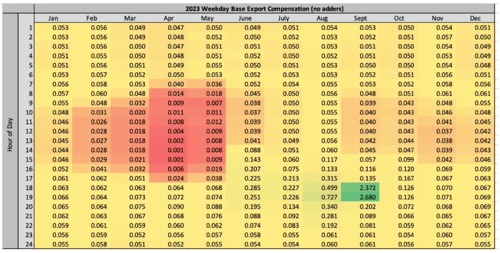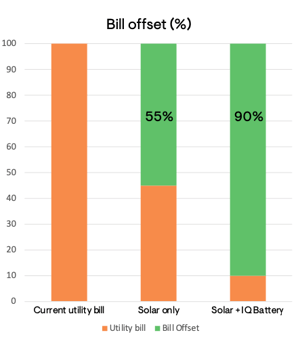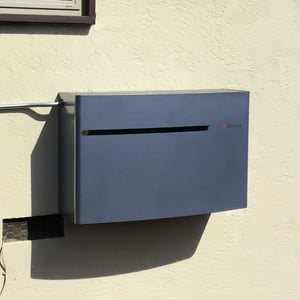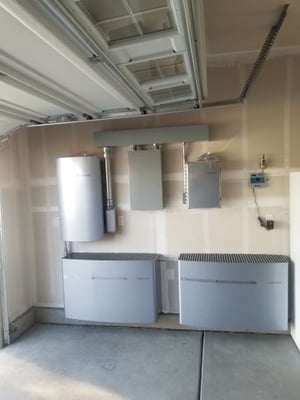Times have changed for solar in California in 2023. But putting solar panels atop your roof and turning your home into a mini-power plant that produces clean, emissions-free energy is as exciting as ever.
After a quick refresher on solar energy and energy storage—how the technologies work and the benefits they offer—we’ll explain how California’s solar market works today. The focus is on you, the homeowner, and how solar still delivers substantial value, just in a slightly different manner.
We’ll explain how to get the most from your solar, how today’s solar can be every bit as valuable as yesterday’s, and how a solar system combined with a storage system now provides greater savings than solar alone can.
Solar Refresher
Let’s start with a reminder on how solar works and the benefits it offers to California homeowners.
The cells in a solar panel absorb photons from the sun and convert them into electrons, which flow through the cell as electrical current. That current flows into your home where it is used to power anything requiring electricity at that time.
If you need more electricity than your solar is making, you draw additional electricity from the utility grid. If you are making more solar electricity than you need at the time, and you don’t have batteries, the extra flows into the utility grid for use by others.
Homeowners who make their own clean solar energy benefit from:
- Savings, through lower electric bills
- A locked-in, lower per-unit price for your electricity
- Some independence from the utility since you make some of your own power
- A lower carbon footprint as you help the planet by making clean energy.
Read more about solar technology, history and benefits on our Learn page.
Solar Storage Refresher
Solar energy storage systems contain rechargeable batteries that store your extra solar electricity and then discharge it at a time of your choosing for use in your home.
As with solar panels, battery technology is very simple. Many batteries, such as Tesla’s Powerwall, use lithium ion technology, which is used in everything from cell phones to electric cars. Some newer batteries, such as Enphase IQ batteries and Franklin batteries, rely on similar, lithion iron phosphate (LFP) technology.
Batteries deliver two very powerful benefits:
- Backup Power: They provide electricity during power outages, for part or all of your home, depending on the size of your battery system.
- Maximum Self-Consumption: They allow you to use all of the solar you produce, rather than sending some of it into the utility grid for use by the utility.
Solar + Storage further increases your energy independence from the utility, and further reduces your carbon footprint, compared to standalone solar.
Read more about energy storage technology and benefits on our Learn page.
And note that we expect some homeowners going forward in California to configure their storage systems solely for self-consumption, as we explain below.
How Solar + Storage Has Changed in California
You may have heard about changes to California solar policy in 2023. Overall, these changes were not helpful, and they made residential (and commercial) solar less economical. Essentially, the amount the utility pays homeowners for solar electricity they send into the grid has been slashed by about 75%.
Further, the rate formula by which you are compensated for solar sent into the grid is now incredibly complex, varying by hour and by month and by utility. (See the chart to the right.)  And those rates, in general, are extremely low when solar production is high and homeowners are more likely to send extra solar into the grid—less than a cent per kWh in some cases.
And those rates, in general, are extremely low when solar production is high and homeowners are more likely to send extra solar into the grid—less than a cent per kWh in some cases.
For a more in-depth explanation of these changes and their implications, read this blog article.
Still, Solar + Storage makes more sense in California than ever before. Let us explain.
Storage Makes Solar Work
One of the beautiful things about investing in solar energy, with or without energy storage, is that the system actually pays for itself over time, through electric bill savings and incentives like the federal Investment Tax Credit. In the 2023 California solar market, standalone solar still pays for itself, unlike most things you buy. But it will take a little longer than before.
 Solar + Storage is now the better investment. As this graph from battery manufacturer Enphase shows, you might offset 90% of your electric bill with solar and a battery, and recoup your investment in 5-7 years if you pay cash upfront.
Solar + Storage is now the better investment. As this graph from battery manufacturer Enphase shows, you might offset 90% of your electric bill with solar and a battery, and recoup your investment in 5-7 years if you pay cash upfront.
The reason a combined system of solar panels and solar batteries now provides greater lifetime savings than a solar-only system is that storage lets you keep and use more of your solar energy. Therein lies the key to getting the most from your solar in 2023 California—you must use the electricity you generate.
More People Will Opt for Self-Consumption vs. Back-Up Power
Here’s another way the solar world has changed for Californians in 2023:
Before, solar energy systems were sized to “zero out” your electric bill by balancing how much solar you produce against how much electricity you use. Because the two were balanced on an ongoing basis, this was very realistic for many people.
And when it came to batteries, many homeowners installed systems large enough to power some or all of their homes during power outages.
Now, because of recent changes, the goal will be to send as little solar as possible into the grid, and to self-consume as much of your solar as possible.
Because solar economics have changed, we believe more people will opt for Solar + Storage versus standalone solar panels. We also predict some people will opt for solar battery systems designed and sized only for self-consumption. Why? Because installing batteries for back-up power during outages uses more equipment and is a more complex process; therefore, it also costs more. A single battery installed to store power for self-consumption is easier, simpler and costs less. This also means you recoup your investment faster.
Some people will still need or want battery systems large enough to offer power outage protection. But for others, the simpler option may be enough.
Energy Storage Gets You Maximum Value From Your Solar
 Energy storage allows you to capture maximum value from your solar electricity, including greater electric bill savings. This was true to some extent before, and has never been more true than it is today.
Energy storage allows you to capture maximum value from your solar electricity, including greater electric bill savings. This was true to some extent before, and has never been more true than it is today.
Because the utilities are now paying you so much less for any solar you send to them, the best way to get maximum benefit from your solar energy is to not send them anything, if you can help it. Export as little as possible to the grid, and reap more of the benefits of the clean energy you produce. Storage helps you do that.
We should point out that balancing your solar production with your electricity needs is more complex under the new rules, in part because your production and your needs most likely fluctuate with the season. Appropriate, careful system design and sizing by a qualified, reputable solar installer is critical to getting the most from your investment.
The Value of Your Solar Is As Good As Ever
If anyone suggests solar in California today isn’t worthwhile, they are wrong. It’s different than before, but still provides significant savings and environmental benefits.
Every kilowatt-hour (kWh) of solar electricity you produce and use offsets a kWh bought from the utility. As California residents know, utility electricity is expensive! Peak pricing as of this writing is (numbers are rounded):
- PG&E: $0.55/kWh
- SCE: $0.62/kWh
- SDG&E: $0.82/kWh
The new rules include the potential for homeowners to actually make money by sending their extra electricity into the grid, but the rates vary by utility and season and time of day. Profiting from this complex system requires exporting your solar energy at very precise times in order to benefit. Contact us if you’d like to know more. 
Getting Started
The changes to California solar policy are a bump in the road that is already in the rearview mirror. They won’t stop the solar revolution. Solar is here to stay. More than 27% of our state’s electricity comes from solar, according to the Solar Energy Industries Association (SEIA).
Even though adding batteries to a solar energy system increases the upfront cost, those costs are fully recovered and then some by the extra savings you'll get from using more of your solar than you could with standalone solar.
And financing can help homeowners install Solar + Storage, often with no upfront cost.
Contact the solar experts at Citadel Roofing & Solar today to learn how Solar + Storage can save you money and increase your energy independence. With our knowledge and guidance, you can be empowered to succeed with solar.
More Resources


